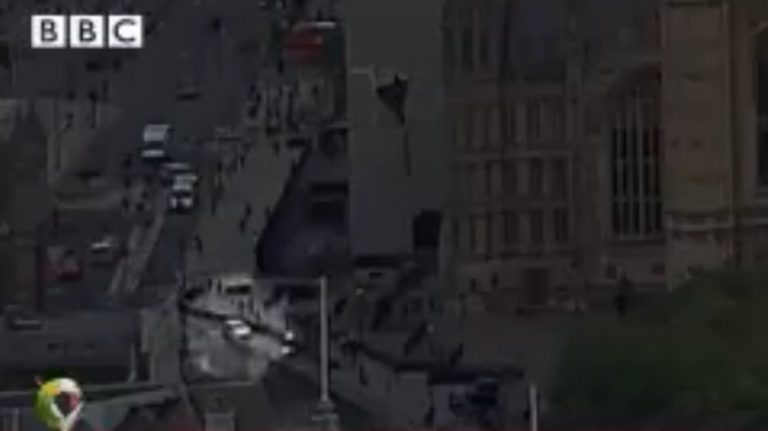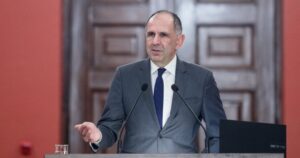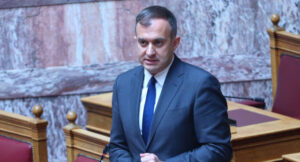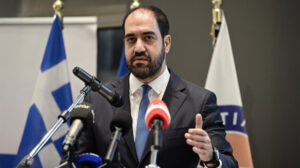A car struck and injured several pedestrians and cyclists, then crashed into a security barrier just outside the Houses of Parliament in London early Tuesday, in what the police said they were treating as a terrorist attack.
About a dozen armed police officers swarmed a silver Ford Fiesta and pointed their weapons at it, before handcuffing the driver, who was arrested on suspicion of terrorist offenses. The police said the driver, in his late 20s, was the only person in the car, and that no weapons had yet been found in the vehicle.
Neil Basu, the counterterrorism chief of the Metropolitan Police, said the department was treating the incident as one of terrorism, “given that this appears to be a deliberate act,” the sensitive location and the method used. Parliament has been attacked before, and past terrorist attacks have involved cars driving into pedestrians.
London #Westminster incident update:
– Man arrested after car crashes into barriers outside Parliament
– Number of pedestrians injured, none life-threatening
– Westminster in lockdownhttps://t.co/CprbiGZgrg pic.twitter.com/cI77btb8T6— BBC Breaking News (@BBCBreaking) August 14, 2018
The Counter-Terrorism Command is leading the investigation, the Metropolitan Police said in a statement.
“Our priority now is to formally establish the identity of the suspect and establish his motivation,” Mr. Basu said. “He is not currently cooperating.”
“We don’t believe this person was known to MI5 or to counterterrorism policing,” he added, referring to Britain’s domestic intelligence service.
Officers set up a security cordon around Parliament Square, with around a dozen police cars and ambulances parked at the site, while helicopters circled above. Armed officers stood guard, and video footage on Twitter showed them urging people to leave the area.
Westminster Bridge was closed to vehicles, pedestrians were directed to alternative routes, and the nearby, heavily used Westminster subway station was closed. None of those injured were believed to be in life-threatening condition, the police said.
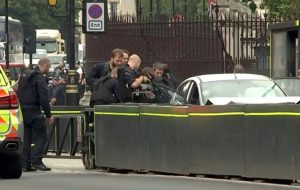
Westminster, the locus of British politics, has been under tight security since March 2017, when an assailant driving a sport utility vehicle mowed down pedestrians on Westminster Bridge and stabbed a police officer, prompting the evacuation of the prime minister. At least four people, including the assailant, were killed, and at least 40 others wounded.
The Parliament building, also called the Palace of Westminster, is bounded by some of the city’s busiest streets, with traffic passing much closer than it does to the White House or the United States Capitol, for example, making security a challenge.
Witnesses told television stations that the episode seemed deliberate; the car was traveling too fast, they said, and did not try to avoid striking people or the security barrier.
One witness, Jason Williams, told ITV’s “Good Morning Britain”: “Basically, I’ve seen a man driving a vehicle, and he’s gone into one of the bollards. There was a loud bang. Straight away I thought, ‘Oh no, this is another terrorist attack.’ So I just started to run, and the police were saying, ‘Get out, get out of the area.’ ”
Another witness, Barry Williams, told the BBC that the car had accelerated after hitting a group of cyclists, rather than trying to slow down.
A security camera recording broadcast by the BBC showed the car making a sharp turn to go the wrong way onto a one-way set of traffic lanes, then driving over an island in the middle of the street, before entering a side lane where it hit the barrier.
Rooftop camera shows moment car crashes into barriers outside Parliamenthttps://t.co/CprbiGZgrg #Westminster pic.twitter.com/0noYclQNaR
— BBC Breaking News (@BBCBreaking) August 14, 2018
George Pascal, 31, a maintenance worker at the Parliament building, said that “there was big smoke and everyone was sent to safe places,” and that the building, had been locked down. “It felt quite claustrophobic because you couldn’t move anywhere.”
“Everything happened so quickly,” he said. “Police were running around with guns and everyone was mobilizing.”
Declaring the episode a “terrorist incident” allows the police to detain the driver for up to 28 days without charging him, rather than the usual limit of three days. Under some circumstances, the designation can also allow the police to restrict the man’s access to legal advice.
According to a police statement, “At 7.37 a.m. today, a car was in collision with barriers outside the Houses of Parliament.” The statement said that the male driver of the car had been detained by officers at the scene. “A number of pedestrians have been injured,” it continued.
Prime Minister Theresa May said on Twitter, “My thoughts are with those injured,” and she thanked “the emergency services for their immediate and courageous response.”
A month after the Westminster attack last year, a 27-year-old man carrying knives was arrested near Parliament by the police, who charged him with planning a terrorist attack. No one was hurt.
And in June that year, three men killed six civilians near London Bridge and the nearby Borough Market, and wounded dozens more.
Parliament was already surrounded by lines of crash bollards, balustrades and steel barricades, put in place after the Sept. 11, 2001, attacks in the United States and the bombings on July 7, 2005, in London. Terrorist attacks in Paris and Brussels in 2016 led to even tighter security.
Source: nytimes
Ask me anything
Explore related questions
